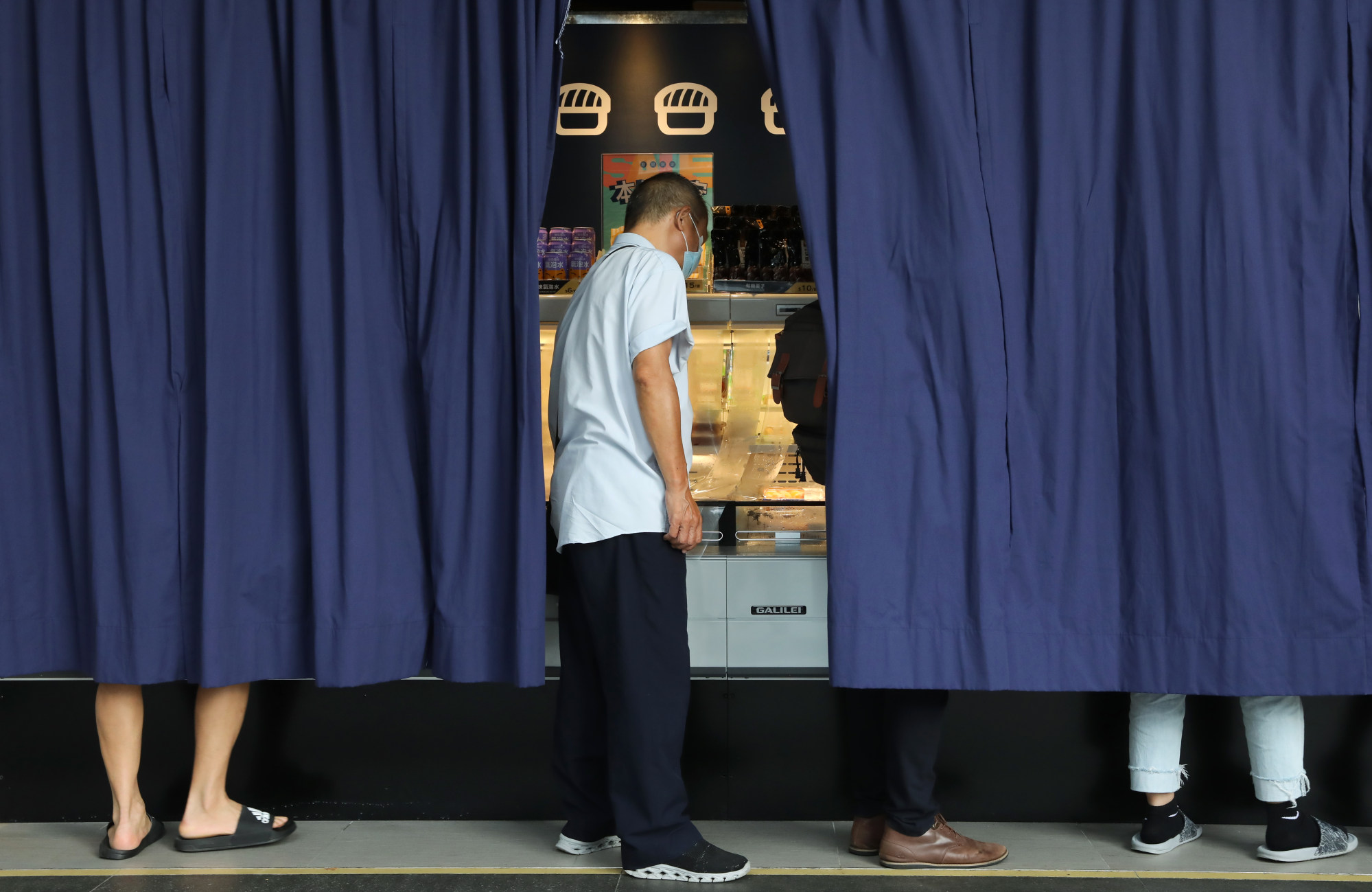
Hong Kong ban on Japanese seafood to remain in place until tests, third-party evaluation prove products are safe, officials say
- Hong Kong ban, a response to controversial Japanese plan to discharge treated waste water from Fukushima nuclear plant, takes effect at midnight on Wednesday
- Authorities will also ramp up efforts to test seafood caught in Hong Kong waters for radioactivity
A Hong Kong ban on Japanese seafood that takes effect at midnight will not be lifted until government tests and third-party evaluation prove goods from the 10 prefectures affected are safe following the release of nuclear waste water into the sea, environment officials have said.
The Agriculture, Fisheries and Conservation Department will ramp up efforts from Thursday to test seafood caught in Hong Kong waters for radioactivity on a daily basis rather than monthly, while the Observatory will monitor radiation levels in seawater more frequently, checking once a month instead of quarterly.
With Japan set to begin discharging treated radioactive water from the crippled Fukushima nuclear plant into the sea on Thursday, Hong Kong authorities gazetted an order detailing the types of aquatic products to be banned, covering live, chilled, frozen, dried and preserved goods, seaweed items and sea salt from 10 prefectures.

The government said in the gazette the measures aimed to “prevent or reduce the possibility of danger to public health” as there was uncertainty about the effects of the radionuclides on the food chain as the unprecedented discharge would continue for 30 years or more.
The city is one of Japan’s biggest markets for fisheries exports. Asked how long the ban would remain in force, Permanent Secretary for Environment and Ecology Vivian Lau Lee-kwan said: “I don’t think [lifting it] will happen too soon.”
She said authorities would monitor the operation of the waste water treatment system and statistics from the Japanese side on seawater near the power station.
Hong Kong to ban Japanese seafood from 10 prefectures over Fukushima plan
“Some asked if it is enough to rely on data provided by Japan. Some experts have said that [for their] data to be convincing to other economies, the Japanese government may consider third-party participation and certification of their data,” Lau told a press briefing on the ban.
Tokyo plans to release 1.32 million metric tonnes, equivalent to 500 Olympic swimming pools, of treated radioactive water over 30 years, sparking concerns across the region about the long-term effects on the ocean food chain.
The order, gazetted on Wednesday afternoon, prohibits the import and supply of aquatic products harvested, manufactured, processed or packed on or after Thursday.
Those importing seafood products from the 10 prefectures face a HK$100,000 (US$13,000) fine and a year’s imprisonment.
Condiments such as oyster sauce and soy sauce were not covered as they were “not defined as aquatic products”, Centre for Food Safety controller Christine Wong Wang noted.
Officials also said residents returning from Japan could still bring back a “small amount” of goods as souvenirs, while neighbouring Macau announced it would increase checks to prevent travellers from bringing in products from the 10 prefectures.
The Macau ban involves a wider spectrum of food from Japan, covering animal and dairy products, seafood, fruits, vegetables, sea salt, seaweed, meat, poultry and eggs from the 10 prefectures, according to its Municipal Affairs Bureau.
Lau said the Hong Kong government aimed to regulate importers and suppliers, including buying agents, where commercial sales of such products posed a risk to public health.
“We wouldn’t advise the public to buy products from the 10 prefectures for their own use or give away to friends and family,” she said.
Hong Kong experts warn over contamination of Japanese seafood from Fukushima plan
Hong Kong is Japan’s second-largest market for fisheries exports, with mainland China being the largest. In 2022, the city imported Japanese seafood products worth about 75.5 billion yen (US$536 million), accounting for more than 20 per cent of Tokyo’s total marine product exports, government data showed.
Authorities said they had tested 10,357 food samples from Japan since mid-June, half of which were seafood, and had since widened the testing scope to include all aquatic products from the country.
The import ban will apply to the prefectures of Tokyo, Fukushima, Chiba, Tochigi, Ibaraki, Gunma, Miyagi, Niigata, Nagano and Saitama.

Earlier in the day, Secretary for Environment and Ecology Tse Chin-wan pledged to work with the catering sector to certify restaurants that offered safe seafood in a bid to boost diners’ confidence amid concerns about the discharge plan.
Tse reiterated his assurance to consumers that imported Japanese seafood products would be safe, with control measures to be in place from Thursday.
“The purpose of the ban and the strict radiation tests on Japanese aquatic products is to allay fears and let consumers know that such food imported into Hong Kong is definitely safe,” he told a radio programme earlier on Wednesday.
Opinion: Japanese officials should eat own seafood to ease Fukushima fears
Martin Chan Keung, a member of the board of directors of the Hong Kong Federation of Restaurants and Related Trades, told the same radio show the certification scheme could “give residents confidence”.
But Chan also called for authorities to provide financial help for the sector as he said it would take at least three to six months for affected eateries to recover from reduced business.
He said sector sales had plunged 30 to 40 per cent since the announcement of Japan’s discharge plan as consumers had lost confidence in imported food from the country.
“Only about 10 per cent of imported food is from the 10 prefectures, which will not have a huge impact on the basic operation of our Japanese restaurants. The biggest impact is the public’s confidence in food safety,” Chan said.



